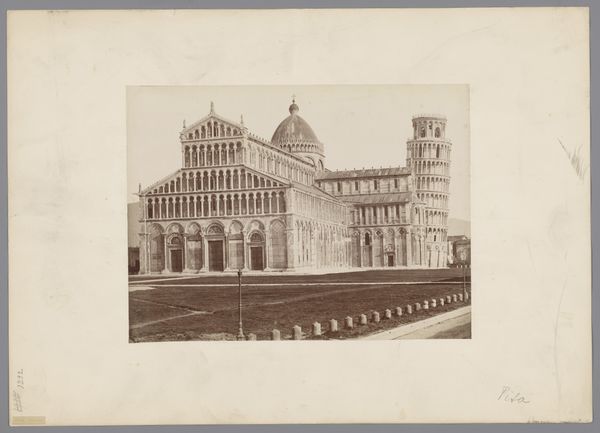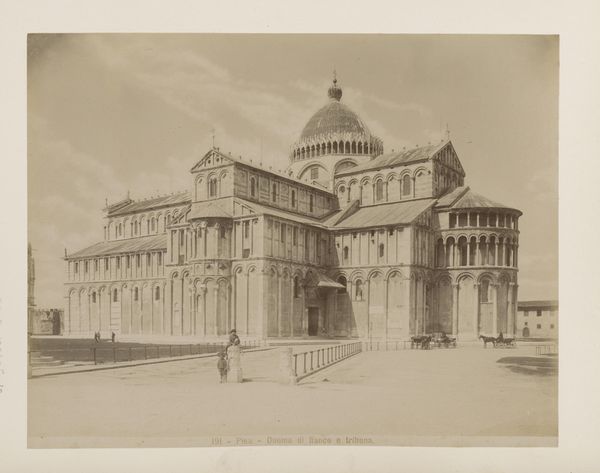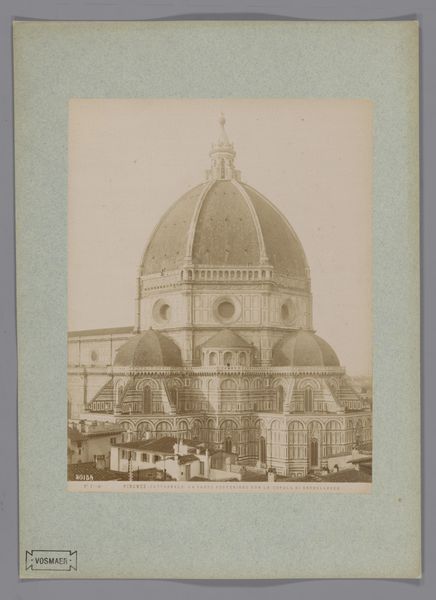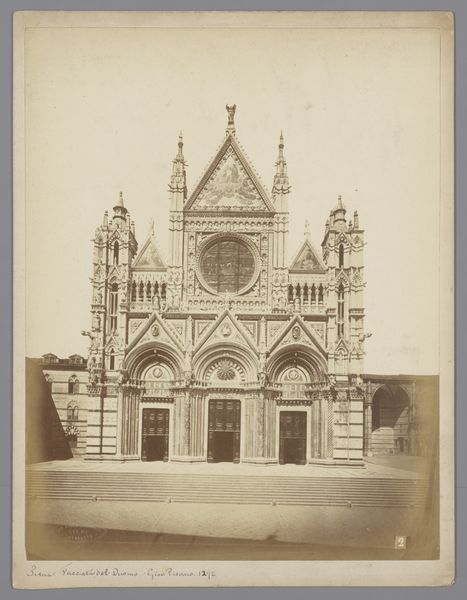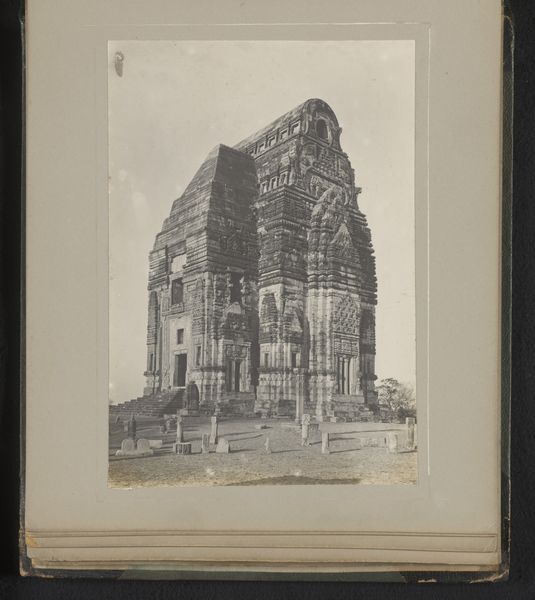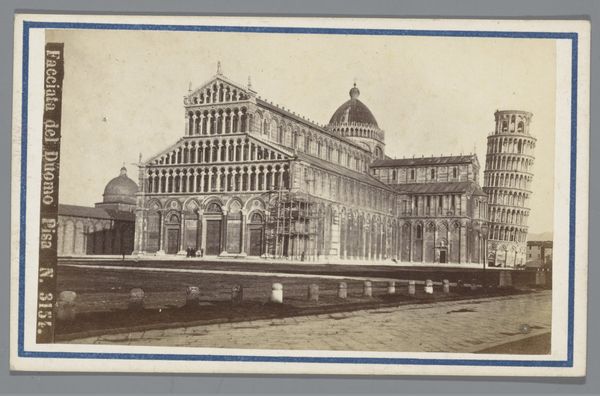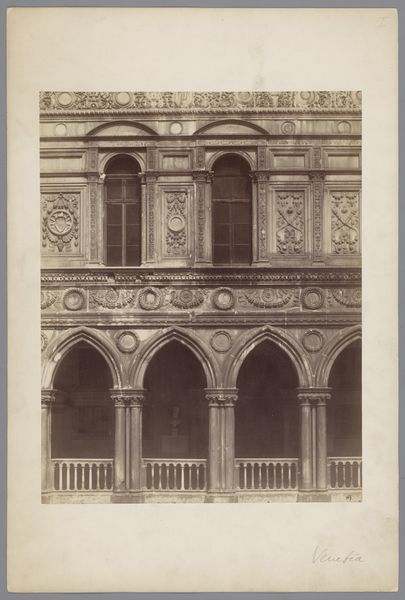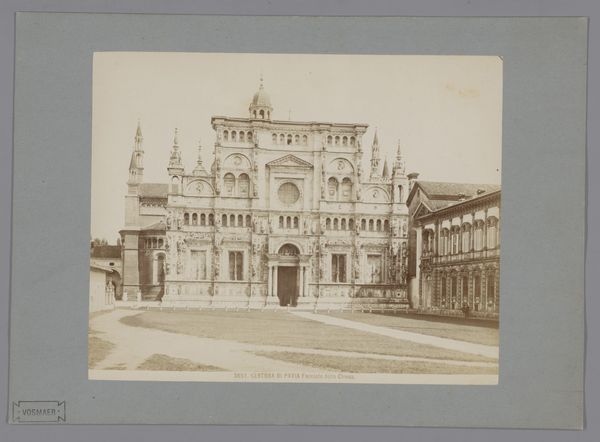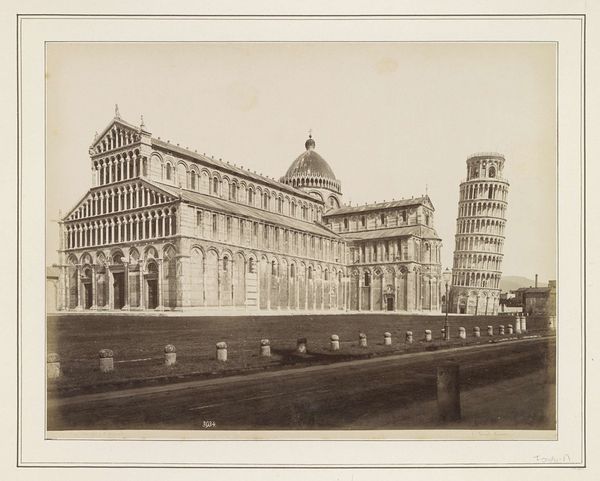
Dimensions: height 105 mm, width 63 mm
Copyright: Rijks Museum: Open Domain
This print from the 1800s, by Enrico van Lint, shows the Baptisterium in Pisa. It was created using a photographic process. The image is made with albumen print. The process involved coating paper with egg white and silver nitrate, exposing it to light with a negative, and then fixing the image. This technique renders incredible detail, as you can see in the intricate stonework of the Baptisterium. This process was very labor intensive. Photography in the 19th century was at the intersection of science, craft, and commerce. Photographers like Van Lint were skilled artisans, meticulously preparing their materials, and carefully controlling the printing process. The final image shows the social, cultural and economic value placed on the place it depicts. Photographs like this one played a role in shaping perceptions of places and cultures, influencing tourism and cultural exchange. So, next time you look at a photograph, think about not just what it shows, but how it was made, and what that making tells us about the world at the time.
Comments
No comments
Be the first to comment and join the conversation on the ultimate creative platform.

